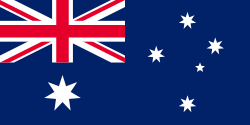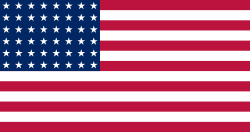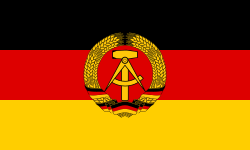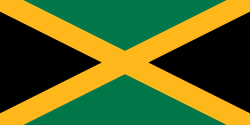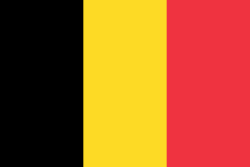Shirley Stricklandová
| Shirley Stricklandová | |
|---|---|
 Socha Shirley Stricklandové na kriketovém stadionu v Melbourne Cricket Ground | |
| Osobní informace | |
| Narození | 18. července 1925 Northam |
| Úmrtí | 11. února 2004 (ve věku 78 let) Perth |
| Stát | |
| Výška | 172 cm |
| Rodiče | Dave Strickland |
| Kariéra | |
| Disciplína | 100 m, 80 m překážek |
| Účasti na LOH | 1948, 1952, 1956 |
| Některá data mohou pocházet z datové položky. | |
| Přehled medailí | ||
|---|---|---|
| bronz | LOH 1948 Londýn | běh na 100 m |
| bronz | LOH 1948 Londýn | 80 m překážek |
| stříbro | LOH 1948 Londýn | štafeta 4 x 100 m |
| zlato | LOH 1952 Helsinky | 80 m překážek |
| bronz | LOH 1952 Helsinky | běh na 100 m |
| zlato | LOH 1956 Melbourne | 80 m překážek |
| zlato | LOH 1956 Melbourne | štafeta 4 x 100 m |
Shirley Barbara Stricklandová, později známá jako Shirley Strickland de la Hunty (18. července 1925 Northam, Západní Austrálie – 11. února 2004 Perth) byla australská atletka, sprinterka, trojnásobná olympijská vítězka.
Sportovní kariéra
Pocházela z Northamu v Západní Austrálii, studovala na Západoaustralské univerzitě. První velké úspěchy se dostavily v roce 1948. Zvítězila na mistrovství Austrálie v běhu na 80 metrů překážek. Na olympiádě v Londýně pak získala stříbrnou medaili ve štafetě na 4 x 100 metrů a bronzové medaile v běhu na 80 metrů překážek (v čase 11,4) a v běhu na 100 metrů (12,2). Na následující olympiádě v Helsinkách v roce 1952 zvítězila v běhu na 80 metrů překážek v novém světovém rekordu 10,9. Bronzovou medaili získala v běhu na 100 metrů (v čase 11,9). V roce 1955 vytvořila nový světový rekord v běhu na 100 metrů časem 11,3 sekundy. Na olympiádě v Melbourne v roce 1956 obhájila olympijské zlato v běhu na 80 metrů překážek, když vytvořila nový olympijský rekord 10,7. Byla rovněž členkou vítězné štafety v běhu na 4 x 100 metrů.
Během tří olympijských startů v letech 1948 až 1956 startovala v 26 bězích (rozbězích, semifinále a v 9 finálových startech). Získala celkem 7 olympijských medailí (3 zlaté, jednou stříbrnou a 3 bronzové), více než jakýkoliv jiný australský běžec.
Po skončení sportovní kariéry působila jako funkcionářka australských olympijských výprav v Mexiku v roce 1968 a v Montrealu v roce 1976.
Externí odkazy
 Obrázky, zvuky či videa k tématu Shirley Stricklandová na Wikimedia Commons
Obrázky, zvuky či videa k tématu Shirley Stricklandová na Wikimedia Commons - Shirley Stricklandová na stránkách IAAF (anglicky)
- Shirley Stricklandová v databázi Olympedia (anglicky)
Média použitá na této stránce
Flag of Australia, when congruence with this colour chart is required (i.e. when a "less bright" version is needed).
See Flag of Australia.svg for main file information.Olympic Rings without "rims" (gaps between the rings), As used, eg. in the logos of the 2008 and 2016 Olympics. The colour scheme applied here was specified in 2023 guidelines.
Olympic Rings without "rims" (gaps between the rings), As used, eg. in the logos of the 2008 and 2016 Olympics. The colour scheme applied here was specified in 2023 guidelines.
The Canadian Red Ensign used between 1921 and 1957.
This image has compared for accuracy (mainly colors) using an image from World Statesmen. The only change is making the maple leaves green from red. This image has compared for accuracy (mainly colors) using an image from World Statesmen. The most recent version of this image has changed the harp into one with a female figure; see [http://flagspot.net/flags/ca-1921.html FOTW
US Flag with 48 stars. In use for 47 years from July 4, 1912, to July 3, 1959.
Flag of Second Polish Republic and later People's Republic of Poland in period from March 29, 1928 to March 10, 1980. Red shade used here is HTML "vermilion" #E34234. Proportion 5:8.
Flag of Second Polish Republic and later People's Republic of Poland in period from March 29, 1928 to March 10, 1980. Red shade used here is HTML "vermilion" #E34234. Proportion 5:8.
Flag of Jamaica. “The sunshine, the land is green, and the people are strong and bold” is the symbolism of the colours of the flag. GOLD represents the natural wealth and beauty of sunlight; GREEN represents hope and agricultural resources; BLACK represents the strength and creativity of the people. The original symbolism, however, was "Hardships there are, but the land is green, and the sun shineth", where BLACK represented the hardships being faced.
The civil ensign and flag of Belgium. It is identical to Image:Flag of Belgium.svg except that it has a 2:3 ratio, instead of 13:15.
Autor: Melburnian, Licence: CC BY 2.5
Statue of Shirley Strickland outside the Melbourne Cricket Ground. Sculptor: Louis Laumen.
